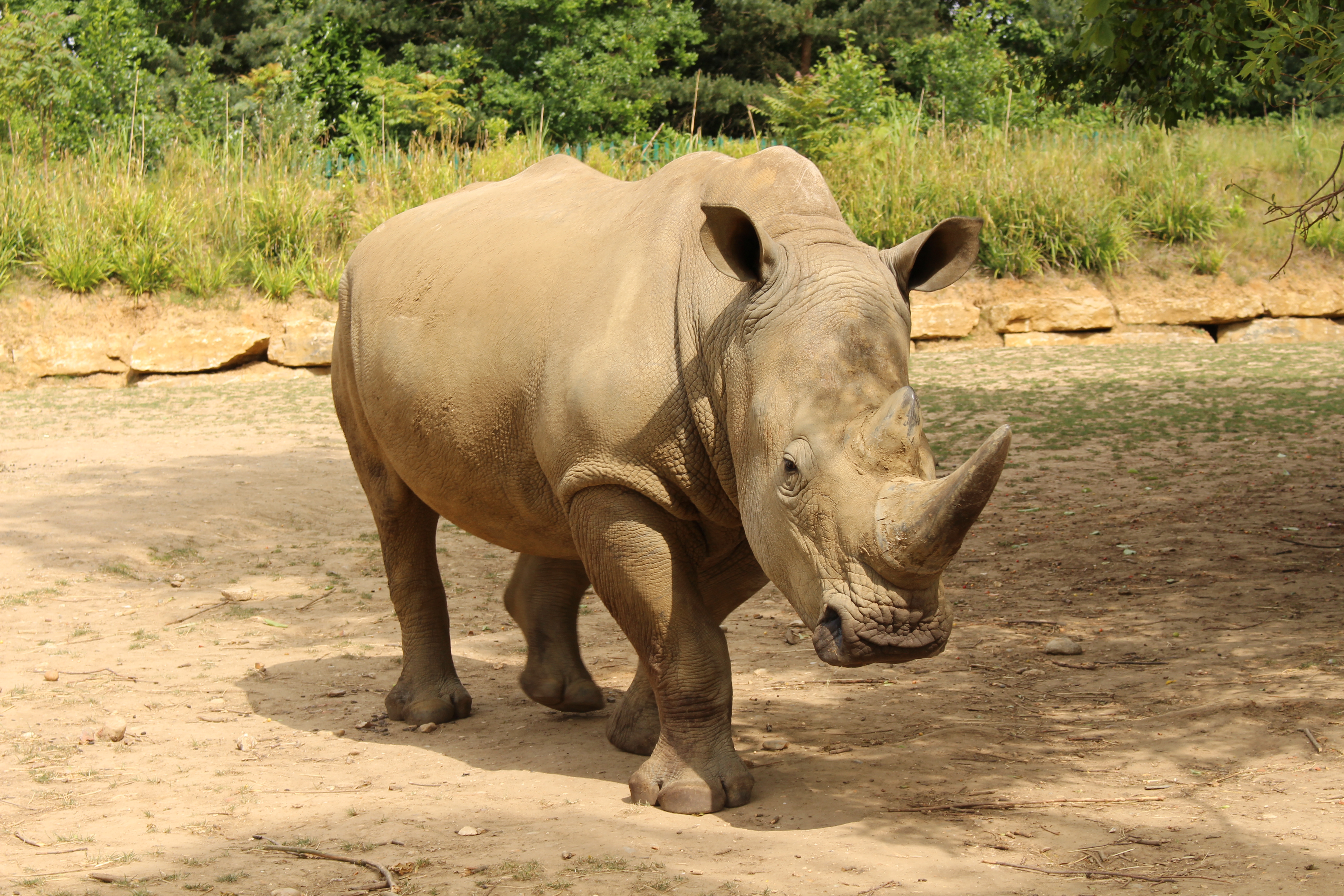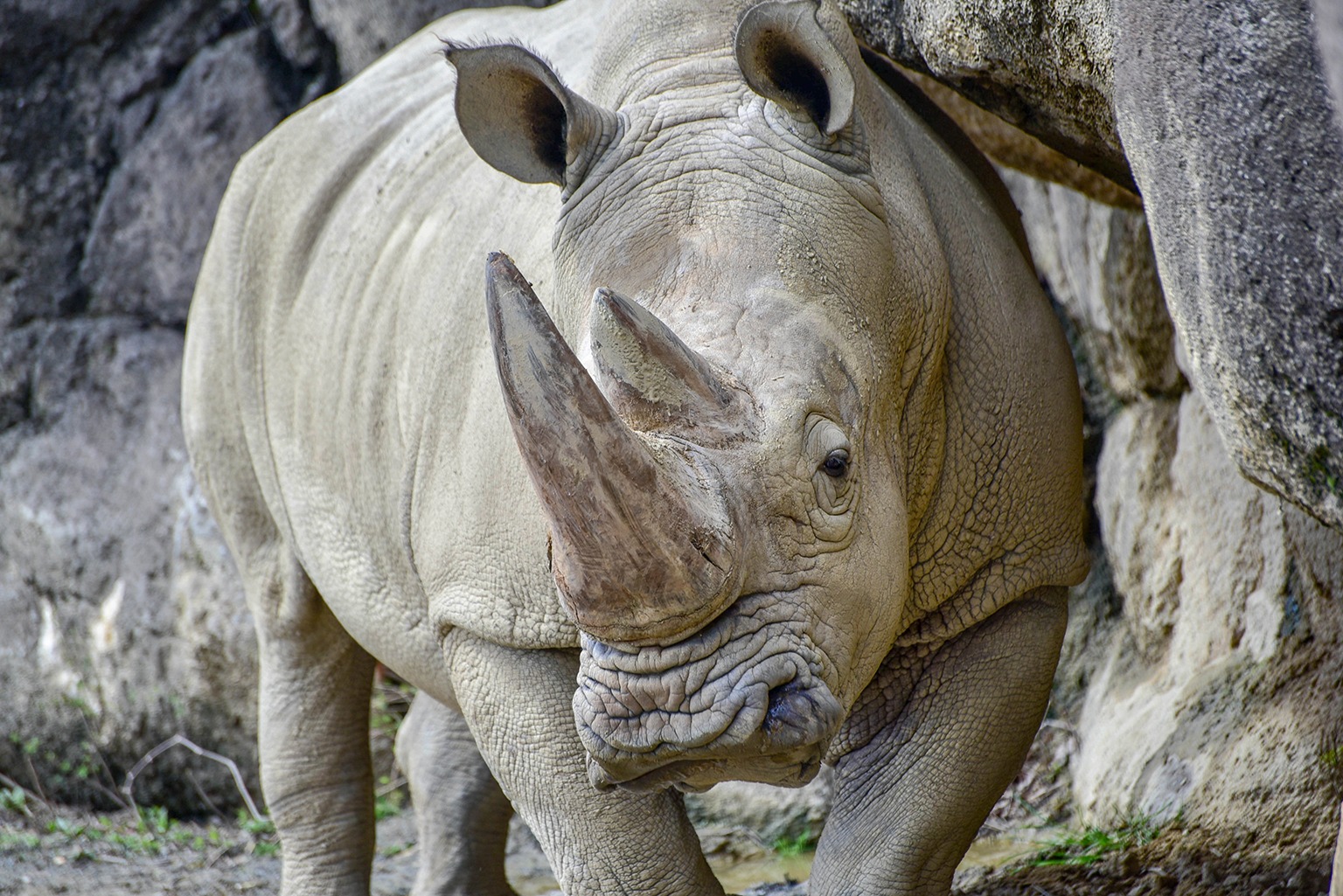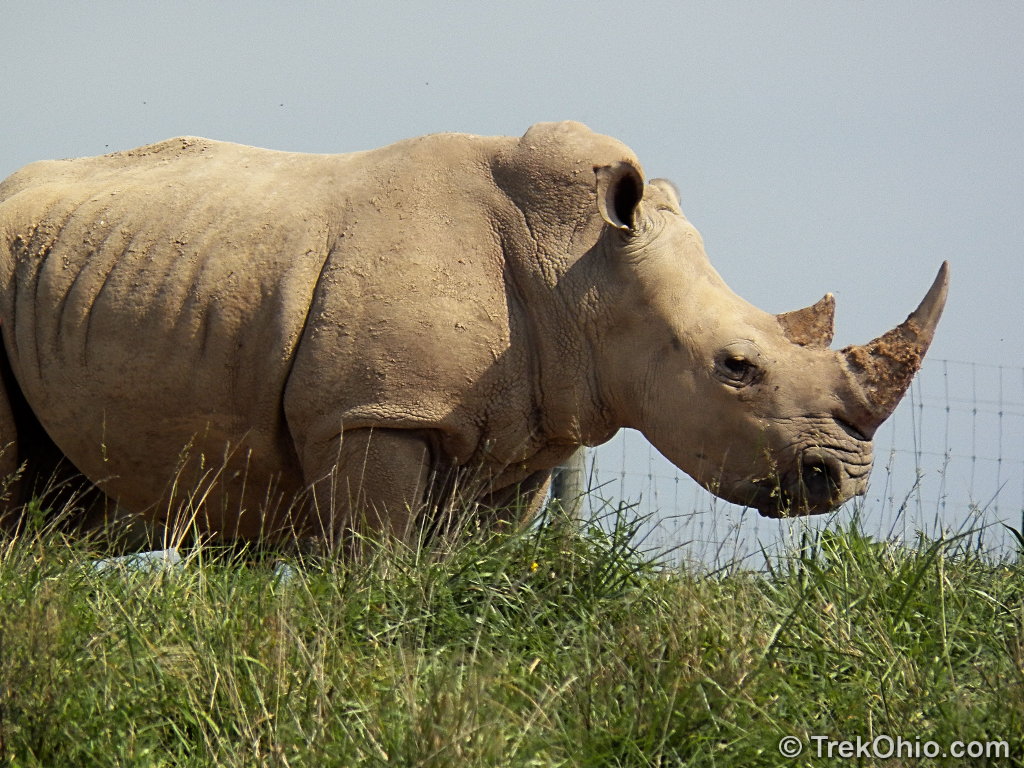

The southern white rhino is listed as Near Threatened it is mostly threatened by habitat loss and poaching for rhino horn for use in traditional Chinese medicine. Taxidermied specimen, Royal Ontario Museum Young usually become independent in 2-3 years. Newborn calves weigh about 45 kg (100 pounds) at birth. Males are not involved in raising the calf, and some unrelated males might kill calves because they may see them as competition or they have a desire to mate with the mother. They give birth to a single calf after the gestation period that lasts around 16 months. Little is known about Southern White Rhinoceros mating habits, but females reproduce every 2-3 years. Southern white rhinos are strictly herbivores (graminivores) that feed on short grasses. The southern white rhino has a distinctive flat, broad mouth that is used for grazing. Most of its body hair is found on the ear fringes and tail bristles, with the rest distributed sparsely over the rest of the body. The colour of this animal can range from yellowish brown to slate grey. The southern white rhinoceros also has a prominent muscular hump that supports its large head. Females usually have longer but thinner horns than the males, who have larger but shorter ones. The front horn is larger than the other horn and averages 60 cm (24 in) in length and can reach 150 cm (59 in). It has an immense body and large head, a short neck and broad chest. The southern white rhinoceros is one of largest and heaviest land animals in the world.

Physical descriptions Ī southern white rhino mother with calf in Namibia. Distinct morphological and genetic differences suggest the two proposed species have been separated for at least a million years. However, it is now considered part of the southern white rhinoceros.įollowing the phylogenetic species concept, research in 2010 suggested the southern and northern white rhinoceros may be different species, rather than subspecies, in which case the correct scientific name for the northern subspecies is Ceratotherium cottoni and the southern subspecies should be known as simply Ceratotherium simum. However, these are considered synonyms of its original scientific name.Ĭeratotherium simum kiaboaba (or Rhinoceros kiaboaba), also known as straight-horned rhinoceros, was proposed as a different subspecies (or species) found near Lake Ngami and north of the Kalahari desert. The subspecies is also known as Burchell's rhinoceros ( Ceratotherium simum burchellii) after Burchell and Oswell's rhinoceros ( Ceratotherium simum oswellii) after William Cotton Oswell, respectively.


The southern white rhinoceros is the nominate subspecies it was given the scientific name Ceratotherium simum simum by the English explorer William John Burchell in the 1810s. It is the most common and widespread subspecies of rhinoceros. The southern white rhinoceros or southern white rhino ( Ceratotherium simum simum) is one of the two subspecies of the white rhinoceros (the other being the much rarer northern white rhinoceros). Ceratotherium simum kiaboaba (Murray, 1866).Ceratotherium simum oswellii (Elliot, 1847).Ceratotherium simum burchellii (Desmarest, 1822).Illegal killings reached a peak of more than 1,200 in 2014 and a drought the next year has left the Kruger National Park, where the bulk of South Africa’s rhinos live, with only 3,549 white rhinos, according to the 2020 annual report of South African National Parks.Presence uncertain & assisted colonisation Otherwise it will go extinct if it’s under so much stress. “To save the species you need to breed it. “The project needs a new custodian to take over, someone who’s got the vision and the same passion,” said Tammy Hume, a spokeswoman for Platinum Rhino, where about 100 rhinos are born every year. The trade is banned as its use in East Asia for alleged cancer cures and virility boosters has led to an illicit market that has caused rampant poaching. John Hume, the owner of the ranch, failed in his attempts to legalize the trade in rhino horns - which can be sawn off live rhinos and grow back - rendering the project too costly to keep running, the company said. The sale of the 2,000 endangered rhinos, equipment and the land at the Platinum Rhino Project, which is about 155 kilometers (96 miles) southwest of Johannesburg, comes as South Africa fights to protect rhinos in its nature reserves against illegal hunters who have decimated the wild population.


 0 kommentar(er)
0 kommentar(er)
